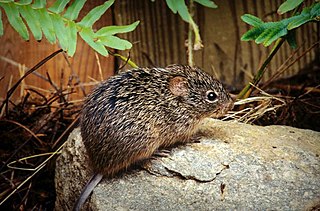
The rodent subfamily Sigmodontinae includes New World rats and mice, with at least 376 species. Many authorities include the Neotominae and Tylomyinae as part of a larger definition of Sigmodontinae. When those genera are included, the species count numbers at least 508. Their distribution includes much of the New World, but the genera are predominantly South American, such as brucies. They invaded South America from Central America as part of the Great American Interchange near the end of the Miocene, about 5 million years ago. Sigmodontines proceeded to diversify explosively in the formerly isolated continent. They inhabit many of the same ecological niches that the Murinae occupy in the Old World.
The Andean rat, or white-tailed akodont, is the only species in the genus Lenoxus. It is a rodent in the tribe Akodontini found on the eastern slopes of the Andes of eastern Peru and western Bolivia. Examination of its genome shows that this species is not closely related to Oxymycterus as had previously been thought, but is quite distinct, having diverged from the other Akodontini soon after the basal radiation of the entire group.

Oxymycterus is a genus of rat-like rodents commonly known as hocicudos. They are endemic to South America. As of April 2019, the genus contains the following 16 species:
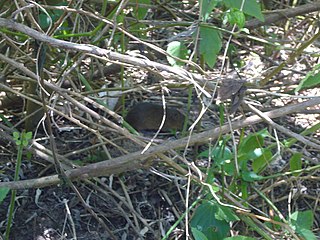
The red hocicudo is a rodent species from South America. It is found in Argentina, Brazil and Uruguay.
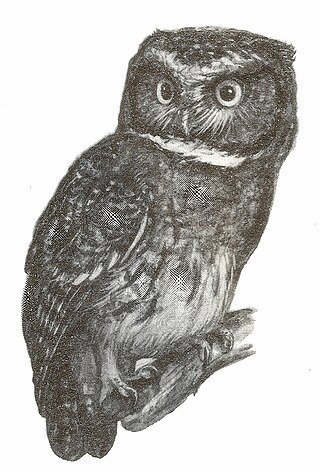
The white-throated screech owl is a small owl found in the Andes of Bolivia, Colombia, Ecuador, Peru and Venezuela.
Oecomys superans, also known as the large oecomys or foothill arboreal rice rat, is a species of rodent in the genus Oecomys of family Cricetidae. It is found along the eastern slope of the Andes in southern Colombia, Ecuador, and Peru and east into the Amazon basin, including parts of Brazil. Its distribution is poorly known, and it may also occur further south, into Bolivia.
Oligoryzomys destructor, also known as Tschudi's colilargo or the destructive pygmy rice rat, is a species of rodent in the genus Oligoryzomys of family Cricetidae. It is found along the eastern Andes from southern Colombia, through Ecuador, Peru, and Bolivia into northern Argentina. Its karyotype has 2n = 60 and FNa = 76.
The Argentine hocicudo is a species of rodent in the family Cricetidae. It is found only in northern Argentina in yungas habitat. The exact population is unknown as only three specimens have been collected and threats may be deforestation and overgrazing although the exact effects are unknown. Some authorities consider it to be conspecific with Oxymycterus paramensis, while others consider it distinct.
The spy hocicudo is a species of rodent in the family Cricetidae. It is found only in Paraguay.
Oxymycterus hucucha, also known as the Quechuan hocicudo, is a species of rodent in the genus Oxymycterus of family Cricetidae from South America. It is found only in a small region of the Andes in central Bolivia, where it lives in cloud forest at altitudes from 2600 to 3000 m.
The Incan hocicudo is a species of rodent in the family Cricetidae. It is found in Bolivia and Peru.
The Paramo hocicudo is a species of rodent in the family Cricetidae. It is found in Argentina, Bolivia, and Peru. The Argentine hocicudo is sometimes considered conspecific.

The buff-thighed puffleg is a species of hummingbird in the "brilliants", tribe Heliantheini in subfamily Lesbiinae. It is found in Bolivia and Peru.

The sickle-winged guan is a species of bird in the chachalaca, guan, and curassow family Cracidae. It is found in Bolivia, Colombia, Ecuador, and Peru.

The pale-footed swallow is a species of bird in the family Hirundinidae. It is found in the northern Andes, from Venezuela to Bolivia. It is monotypic.
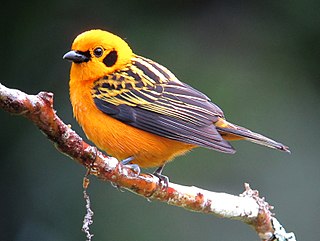
The golden tanager is a species of bird in the family Thraupidae. It is widespread and often common in highland forests of the Andes and Venezuelan Coastal Range in north-western South America.
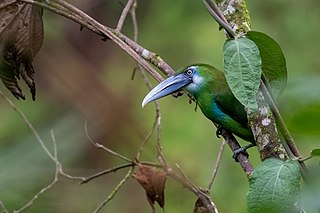
The blue-banded toucanet is a near-passerine bird in the toucan family Ramphastidae. It is found in Bolivia and Peru.
The Atlantic Forest hocicudo is a species of rodent in the family Cricetidae. It is found only in southeastern Brazil, where it lives in the Atlantic Forest and associated wetlands at altitudes from sea level to 800 m (2,600 ft).
The quaestor hocicudo is a species of rodent in the family Cricetidae. It is found in southeastern Brazil and northeastern Argentina, where it lives in forest and moist and dry scrub.

The black-throated toucanet is a near-passerine bird in the toucan family Ramphastidae. It is found in Bolivia, Brazil, Ecuador, and Peru.










